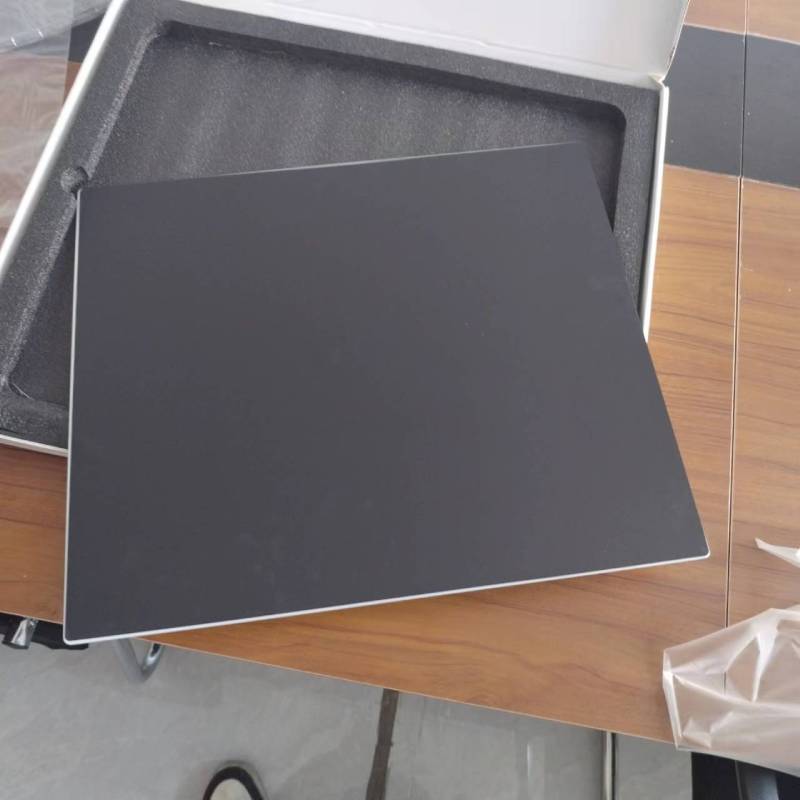The Advantages of Heat Reflective Glass An Innovative Solution for Modern Architecture
In the realm of modern architecture, the pursuit of energy efficiency and environmental sustainability has led to a significant evolution in building materials. Among these materials, heat reflective glass has emerged as a game-changer, offering numerous benefits that align with contemporary design principles and ecological responsibility. This article explores the characteristics, advantages, and applications of heat reflective glass, showcasing its importance in today's architectural landscape.
Heat reflective glass, also known as low-emissivity (Low-E) glass, is engineered to reflect a substantial portion of infrared radiation while allowing visible light to penetrate. This unique property is achieved through a specialized coating, often composed of metals or metallic oxides. The result is a glass that not only minimizes heat transfer but also ensures that indoor spaces remain bright and inviting.
One of the most significant advantages of heat reflective glass is its energy efficiency. By reflecting solar heat away from buildings, it reduces the reliance on air conditioning systems. This reduction in energy consumption not only lowers utility bills for building occupants but also contributes to a decrease in carbon emissions, making heat reflective glass an environmentally friendly choice. In regions with hot climates, incorporating this type of glass can lead to substantial energy savings, especially during peak summer months.
Moreover, heat reflective glass enhances occupant comfort by maintaining a stable indoor temperature. Traditional glazing can result in uncomfortable heat build-up, especially in large, sun-drenched spaces. Heat reflective glass mitigates this issue by ensuring that indoor areas remain cool, thus creating a more pleasant environment for occupants. This comfort extends to both residential and commercial buildings, making it a versatile option for various architectural projects.
heat reflective glass
Another noteworthy feature of heat reflective glass is its ability to reduce glare. In spaces where natural light is abundant, excessive glare can hinder activities, particularly in workplaces or educational settings. Heat reflective glass effectively minimizes glare while still allowing ample daylight to filter through, fostering an ergonomic atmosphere conducive to productivity and well-being.
In addition to its functional benefits, heat reflective glass also offers aesthetic advantages. With a variety of tints and finishes available, architects and designers can achieve striking visual effects while maintaining performance standards. This versatility allows for innovative designs that do not compromise on energy efficiency. A well-designed façade using heat reflective glass can enhance a building's exterior appeal while promoting sustainability.
The applications of heat reflective glass are diverse and widespread. From commercial high-rises to residential homes, its benefits are relevant across various sectors. In commercial architecture, large glass façades can create a desirable modern aesthetic while managing energy costs effectively. For residential properties, heat reflective glass can improve comfort levels for families while contributing to long-term energy savings.
The growing demand for sustainable building practices has seen heat reflective glass become an integral component in green building projects. Certifications such as LEED (Leadership in Energy and Environmental Design) reward the use of energy-efficient materials, presenting an opportunity for developers and builders to not only enhance their projects' environmental credentials but also appeal to an increasingly eco-conscious market.
In conclusion, heat reflective glass stands out as a pivotal material in contemporary architecture, providing a blend of energy efficiency, comfort, and aesthetic appeal. As the world continues to grapple with the challenges of climate change and energy conservation, the adoption of innovative materials like heat reflective glass will play a crucial role in shaping a sustainable future. Embracing such technologies is not only a responsible choice for architects and builders but also a step toward creating healthier, more comfortable living and working spaces for generations to come.
 Afrikaans
Afrikaans  Albanian
Albanian  Amharic
Amharic  Arabic
Arabic  Armenian
Armenian  Azerbaijani
Azerbaijani  Basque
Basque  Belarusian
Belarusian  Bengali
Bengali  Bosnian
Bosnian  Bulgarian
Bulgarian  Catalan
Catalan  Cebuano
Cebuano  Corsican
Corsican  Croatian
Croatian  Czech
Czech  Danish
Danish  Dutch
Dutch  English
English  Esperanto
Esperanto  Estonian
Estonian  Finnish
Finnish  French
French  Frisian
Frisian  Galician
Galician  Georgian
Georgian  German
German  Greek
Greek  Gujarati
Gujarati  Haitian Creole
Haitian Creole  hausa
hausa  hawaiian
hawaiian  Hebrew
Hebrew  Hindi
Hindi  Miao
Miao  Hungarian
Hungarian  Icelandic
Icelandic  igbo
igbo  Indonesian
Indonesian  irish
irish  Italian
Italian  Japanese
Japanese  Javanese
Javanese  Kannada
Kannada  kazakh
kazakh  Khmer
Khmer  Rwandese
Rwandese  Korean
Korean  Kurdish
Kurdish  Kyrgyz
Kyrgyz  Lao
Lao  Latin
Latin  Latvian
Latvian  Lithuanian
Lithuanian  Luxembourgish
Luxembourgish  Macedonian
Macedonian  Malgashi
Malgashi  Malay
Malay  Malayalam
Malayalam  Maltese
Maltese  Maori
Maori  Marathi
Marathi  Mongolian
Mongolian  Myanmar
Myanmar  Nepali
Nepali  Norwegian
Norwegian  Norwegian
Norwegian  Occitan
Occitan  Pashto
Pashto  Persian
Persian  Polish
Polish  Portuguese
Portuguese  Punjabi
Punjabi  Romanian
Romanian  Russian
Russian  Samoan
Samoan  Scottish Gaelic
Scottish Gaelic  Serbian
Serbian  Sesotho
Sesotho  Shona
Shona  Sindhi
Sindhi  Sinhala
Sinhala  Slovak
Slovak  Slovenian
Slovenian  Somali
Somali  Spanish
Spanish  Sundanese
Sundanese  Swahili
Swahili  Swedish
Swedish  Tagalog
Tagalog  Tajik
Tajik  Tamil
Tamil  Tatar
Tatar  Telugu
Telugu  Thai
Thai  Turkish
Turkish  Turkmen
Turkmen  Ukrainian
Ukrainian  Urdu
Urdu  Uighur
Uighur  Uzbek
Uzbek  Vietnamese
Vietnamese  Welsh
Welsh  Bantu
Bantu  Yiddish
Yiddish  Yoruba
Yoruba  Zulu
Zulu 

